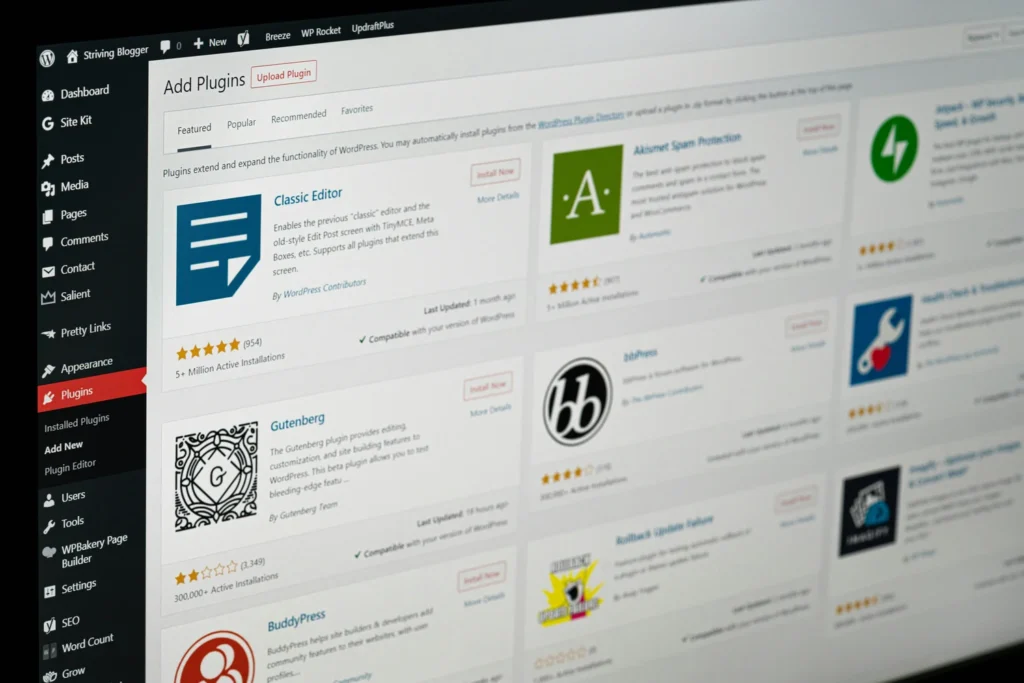Ιt’s been nearly nine years since I installed my first WordPress site. Like many, my journey began with excitement, exploring countless free themes and plugins. The WordPress repository felt like a candy store. If I needed a feature, there was a plugin for it. But as time went on, especially as I started managing more complex WooCommerce sites, a crucial lesson emerged: the best website isn’t the one with the most features, but the one with the right features.

The optimal path, I learned, was to use a minimal number of high-quality, premium plugins. This approach drastically reduces the risk of conflicts—those dreaded moments when a client calls and asks, “Why is my site down?“
The Real Cause of Most WordPress Problems
Over the years, I’ve noticed a recurring pattern. Many WordPress site creators frequently run into problems, but these issues often stem from their own choices, not from inherently faulty tools. The root causes are usually:
- Lack of Awareness: Installing plugins without fully understanding what they do or how they might interact with the existing setup.
- Ignorance: A simple lack of knowledge about WordPress best practices.
- Misplaced Trust: Relying on the wrong tool for a critical job or installing a plugin for a trivial task that could be handled differently.
Too often, the blame is unfairly shifted onto a plugin or a theme, when the real culprit is a flawed implementation strategy.

My Proactive Strategy for a Bulletproof Website
The last year has been a turning point. I adopted a disciplined, proactive approach to managing all my client sites, focusing on prevention rather than cure. The results have been transformative; it’s been a very long time since I’ve had to deal with a serious, unexpected issue.
My strategy is simple:
- Embrace Minimalism: I resist the urge to install a plugin for every minor feature. I carefully evaluate if a new plugin is truly necessary or if there’s a more lightweight alternative.
- Stay Diligently Updated: All plugins and themes are kept current. This is non-negotiable for security and compatibility.
- Implement Redundant Backups: I maintain daily backups on two separate systems: one on the server and another synced to a cloud service like Google Drive. This provides total peace of mind.

Enter AI: The Developer’s “Third Hand”
The recent explosion of AI has been the single biggest game-changer. For anyone who invests even a week to understand the basics of WordPress, its core functions, how plugins work, AI opens up a new world of possibilities.
Let me be clear: AI is not here to replace developers. Instead, I see it as a “third hand” for developers and site managers alike
Whenever I encounter a cryptic error, have a question about a function, or even have doubts about installing a new tool on a client’s site, my first step is to consult an AI. I feed it the error code, describe the situation, and ask for its analysis. In almost every case, it has provided the best possible solution or a clear path forward.
This has a powerful ripple effect. When users can solve minor issues themselves, developers are freed up. Instead of answering support tickets for problems caused by user error or plugin conflicts, they can focus on what truly matters: making their products better, more secure, and more innovative.
Even with my self-described “semi-knowledge” of programming, the combination of focused research and AI assistance has empowered me to solve nearly every non-critical issue on my own.
Conclusion: A New Philosophy for WordPress
The key takeaway from my journey is this: achieving a stable, high-performing WordPress site isn’t a matter of luck. It’s the result of a deliberate and simple strategy: good planning, disciplined minimalism, regular maintenance, and leveraging the incredible power of AI.
By adopting this mindset, you can dramatically lower the probability of encountering problems, build more reliable websites, and allow developers to focus on building the future of WordPress.